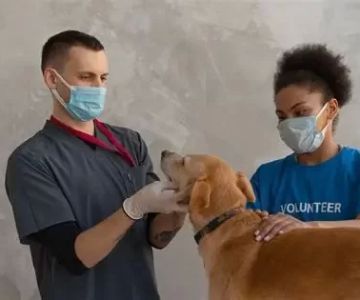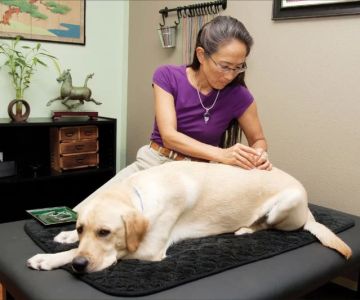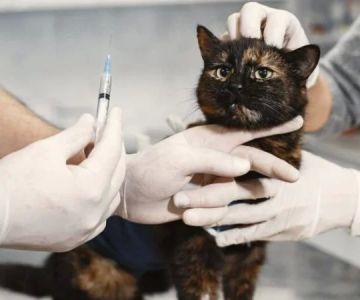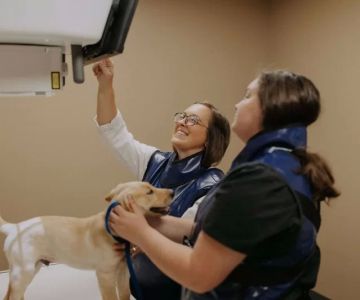What You Need to Do to Be a Veterinarian: A Complete Step-by-Step Guide
- understanding-the-veterinary-career-path
- education-requirements-to-become-a-veterinarian
- gaining-hands-on-experience-early-on
- navigating-veterinary-school-and-specializations
- passing-the-national-board-exam-and-licensing
- real-life-stories-from-practicing-veterinarians
- turning-passion-into-profession-with-the-right-tools
1. Understanding the Veterinary Career Path
Before diving into what you need to do to be a veterinarian, it’s important to understand the depth and variety of the profession. Veterinarians don’t just work with pets—they serve farms, wildlife, zoos, and research labs. The path is long and academically demanding, but incredibly rewarding for those passionate about animal health.
The journey to becoming a vet includes rigorous academic preparation, practical experience, and professional licensing. It's a blend of science, empathy, and grit. And it all begins with a real love for animals—and a readiness to work hard for them.
2. Education Requirements to Become a Veterinarian
2.1 Starting with the Right Undergraduate Major
Most aspiring veterinarians major in biology, animal science, or a pre-veterinary program. While a specific degree isn’t required, your coursework must include chemistry, physics, biology, and animal physiology. These prerequisites are essential for admission to veterinary school.

3405 Hancock Bridge Pkwy, North Fort Myers, FL 33903, USA
See Details2.2 Academic Excellence Matters
Vet schools are highly competitive. A GPA above 3.5, strong GRE scores (or equivalent), and research or volunteer experience with animals can set your application apart.
2.3 Choosing the Right Vet School
There are only 30 accredited veterinary schools in the U.S., so applying widely and early is key. Schools like UC Davis, Cornell, and Colorado State are among the most respected—but also highly selective.
3. Gaining Hands-On Experience Early On
3.1 Volunteering with Local Clinics or Shelters
Many successful veterinarians start out as kennel assistants, shadowing DVMs or working at animal shelters. These early experiences not only build skills, but also reveal the emotional and physical demands of the job.
3.2 Internships and Field Work
Summer internships with farms, wildlife centers, or research labs can boost your resume. They also help you identify which field of veterinary medicine suits your strengths—whether that’s equine care, small animals, or exotic species.
4. Navigating Veterinary School and Specializations
4.1 The Four-Year DVM Program
Veterinary school typically takes four years: two in classroom-based learning, and two in clinical rotations. You'll study anatomy, pathology, pharmacology, and surgery. It's intensive—but builds the foundation for real-world success.
4.2 Choosing a Specialization
Some vets choose to specialize in oncology, surgery, dermatology, or public health. These require additional residencies or board certifications but can lead to higher pay and greater impact.
4.3 Networking and Mentorship
Building relationships with faculty and seasoned veterinarians can open doors to internships, jobs, and future referrals. Most vet schools encourage mentorship programs to help guide students through critical decisions.
5. Passing the National Board Exam and Licensing
5.1 NAVLE: Your Final Academic Hurdle
To practice in the U.S., you must pass the North American Veterinary Licensing Examination (NAVLE). It’s a comprehensive test that evaluates everything you've learned across veterinary school.
5.2 State Licensing and Continuing Education
In addition to the NAVLE, every state requires its own licensure. Some include jurisprudence exams or specific animal health certifications. Vets must also complete ongoing education to stay licensed.
5.3 International Graduates and Special Paths
International vets need to meet equivalency through programs like ECFVG. Though more complex, it’s absolutely possible to become licensed in the U.S. with proper planning and support.
6. Real-Life Stories from Practicing Veterinarians
6.1 Dr. Maria Chen’s Journey into Wildlife Care
Dr. Chen initially aimed for small-animal care but a summer in Kenya changed her trajectory. Today, she works with endangered species and says, “Becoming a veterinarian wasn’t just a job—it was how I chose to protect what I love.”
6.2 From Dog Walker to Doctor: Jake’s Story
Jake spent his teen years walking neighborhood dogs and saving for vet school. He says, “It wasn’t always easy, but every late-night study session was worth it when I saved my first patient.”
7. Turning Passion into Profession with the Right Tools
7.1 Essential Gear and Study Materials
From anatomy flashcards to clinical toolkits, having the right resources makes a difference. Whether you're prepping for the NAVLE or doing your first surgery rotation, don’t underestimate the value of reliable equipment.
7.2 Where to Start Looking
Ready to take your first step? Explore curated tools, professional gear, and student packages designed for aspiring vets. Whether you’re still deciding or deep into the DVM path, we offer everything to keep you on track.
7.3 It’s Time to Act
If you’re serious about what you need to do to be a veterinarian, now is the time to invest in yourself. Equip your journey with confidence. Start with the right tools—because your dream deserves more than just hope.











